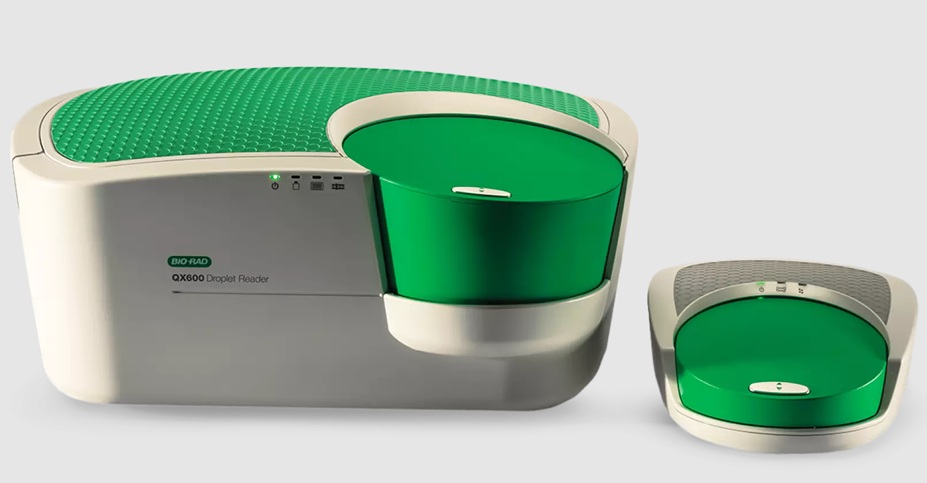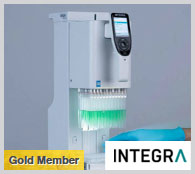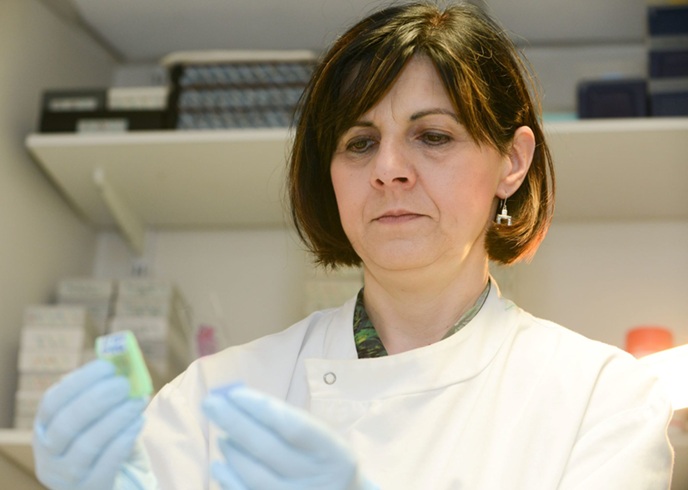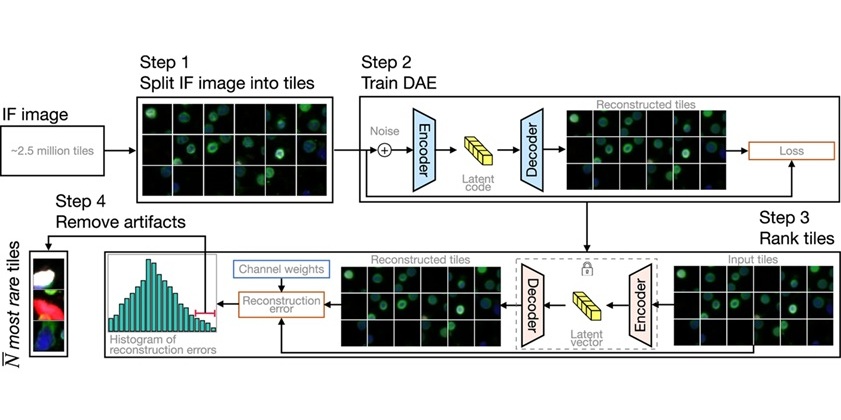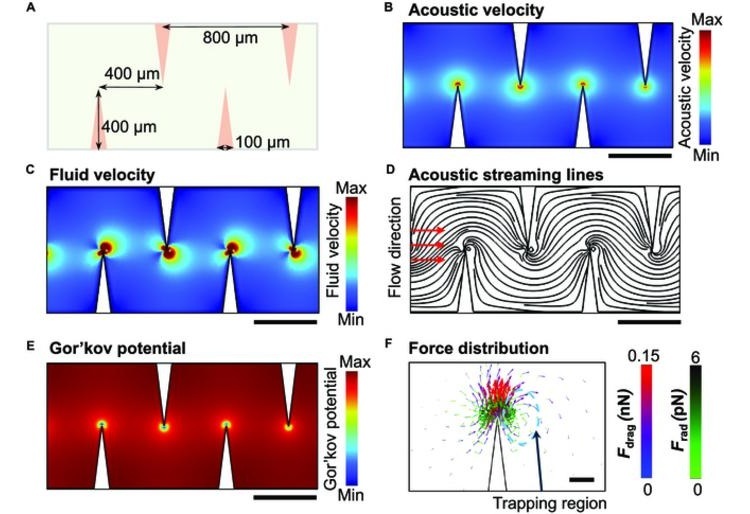Serum Prostate-Specific Antigen Measured by Tandem Mass Spectrometry
|
By LabMedica International staff writers Posted on 23 Oct 2014 |
Prostate-specific antigen (PSA) is a widely used blood test for detection and monitoring of prostate disease and many clinicians assume that all test methods produce essentially the same results, though differences do exist.
PSA is a 34-kDa glycoprotein with chymotrypsin-like enzyme activity that circulates both in free forms and complexed to various enzyme inhibitors including anti-chymotrypsin and α2-macroglobulin. Prostate-specific antigen bound to α2-macroglobulin is not detected by commercial PSA immunoassays.
Scientists at the Mayo Clinic College of Medicine (Rochester, MN, USA) developed a strategy to use a mass spectrometry (MS) assay to measure PSA concentrations that measures only the immune-reactive forms. Prostate-specific antigen is immune extracted from serum using antibodies directed to different PSA epitopes. A combination of three monoclonal anti-PSA antisera, which are directed to different PSA epitopes, was used for immune extraction of PSA from serum. PSA was extracted from serum, trypsin digested, and the LSEPAELTDAVK peptide was quantitated.
Absolute quantitation was performed by liquid chromatography–tandem mass spectrometry using a CTC Analytics HTC PAL auto sampler (LEAP Technologies; Carrboro, NC, USA; www.leaptec.com), a Shimadzu 10-AD binary pumping system (Shimadzu Scientific Instruments; Columbia, MD, USA), and an API 5000 triple quadruple mass spectrometer (AB SCIEX; Framingham, MA, USA). Validation of clinical utility and comparisons with two immunoassays were performed using frozen sera aliquots from 100 men undergoing prostate biopsy, 50 negative, 50 with cancer, and five serial samples collected over time from five men with advanced prostate cancer.
The antibody extraction efficiency was greater than 99%. The assay has an analytic range from 1.2 to 76 ng/mL, with precision ranging from 8.6% at 1.5 ng/mL to 5.4% at 27 ng/mL. The mass spectrometry assay correlated well with the two commercial immunoassays. All three assays showed statistically equivalent separation of prostate cancer from benign disease using receiver operating characteristic curve analysis.
The authors concluded that their MS assays are the first potential reference mass spectrometry assays that measure the same forms of PSA as the commercial immunoassays. These assays can reliably quantitate PSA concentrations in male sera that closely match existing immunoassays, and these assays are traceable to the international PSA standard with the proteins and therefore make the measurement system incomplete. Another advantage of their immune extraction is the increase in the relative concentration of PSA caused when the peptides from the PSA in a larger sample of serum are re-suspended in a smaller injection volume of buffer for the MS. This increase in concentration helps improve the robustness of the MS assay. The study was published on the October 2014 issue of the journal Archives of Pathology & Laboratory Medicine.
Related Links:
Mayo Clinic College of Medicine
LEAP Technologies
AB SCIEX
PSA is a 34-kDa glycoprotein with chymotrypsin-like enzyme activity that circulates both in free forms and complexed to various enzyme inhibitors including anti-chymotrypsin and α2-macroglobulin. Prostate-specific antigen bound to α2-macroglobulin is not detected by commercial PSA immunoassays.
Scientists at the Mayo Clinic College of Medicine (Rochester, MN, USA) developed a strategy to use a mass spectrometry (MS) assay to measure PSA concentrations that measures only the immune-reactive forms. Prostate-specific antigen is immune extracted from serum using antibodies directed to different PSA epitopes. A combination of three monoclonal anti-PSA antisera, which are directed to different PSA epitopes, was used for immune extraction of PSA from serum. PSA was extracted from serum, trypsin digested, and the LSEPAELTDAVK peptide was quantitated.
Absolute quantitation was performed by liquid chromatography–tandem mass spectrometry using a CTC Analytics HTC PAL auto sampler (LEAP Technologies; Carrboro, NC, USA; www.leaptec.com), a Shimadzu 10-AD binary pumping system (Shimadzu Scientific Instruments; Columbia, MD, USA), and an API 5000 triple quadruple mass spectrometer (AB SCIEX; Framingham, MA, USA). Validation of clinical utility and comparisons with two immunoassays were performed using frozen sera aliquots from 100 men undergoing prostate biopsy, 50 negative, 50 with cancer, and five serial samples collected over time from five men with advanced prostate cancer.
The antibody extraction efficiency was greater than 99%. The assay has an analytic range from 1.2 to 76 ng/mL, with precision ranging from 8.6% at 1.5 ng/mL to 5.4% at 27 ng/mL. The mass spectrometry assay correlated well with the two commercial immunoassays. All three assays showed statistically equivalent separation of prostate cancer from benign disease using receiver operating characteristic curve analysis.
The authors concluded that their MS assays are the first potential reference mass spectrometry assays that measure the same forms of PSA as the commercial immunoassays. These assays can reliably quantitate PSA concentrations in male sera that closely match existing immunoassays, and these assays are traceable to the international PSA standard with the proteins and therefore make the measurement system incomplete. Another advantage of their immune extraction is the increase in the relative concentration of PSA caused when the peptides from the PSA in a larger sample of serum are re-suspended in a smaller injection volume of buffer for the MS. This increase in concentration helps improve the robustness of the MS assay. The study was published on the October 2014 issue of the journal Archives of Pathology & Laboratory Medicine.
Related Links:
Mayo Clinic College of Medicine
LEAP Technologies
AB SCIEX
Read the full article by registering today, it's FREE! 

Register now for FREE to LabMedica.com and get access to news and events that shape the world of Clinical Laboratory Medicine. 
- Free digital version edition of LabMedica International sent by email on regular basis
- Free print version of LabMedica International magazine (available only outside USA and Canada).
- Free and unlimited access to back issues of LabMedica International in digital format
- Free LabMedica International Newsletter sent every week containing the latest news
- Free breaking news sent via email
- Free access to Events Calendar
- Free access to LinkXpress new product services
- REGISTRATION IS FREE AND EASY!
Sign in: Registered website members
Sign in: Registered magazine subscribers
Latest Clinical Chem. News
- VOCs Show Promise for Early Multi-Cancer Detection
- Portable Raman Spectroscopy Offers Cost-Effective Kidney Disease Diagnosis at POC
- Gold Nanoparticles to Improve Accuracy of Ovarian Cancer Diagnosis
- Simultaneous Cell Isolation Technology Improves Cancer Diagnostic Accuracy
- Simple Non-Invasive Hair-Based Test Could Speed ALS Diagnosis
- Paper Strip Saliva Test Detects Elevated Uric Acid Levels Without Blood Draws
- Prostate Cancer Markers Based on Chemical Make-Up of Calcifications to Speed Up Detection
- Breath Test Could Help Detect Blood Cancers
- ML-Powered Gas Sensors to Detect Pathogens and AMR at POC
- Saliva-Based Cancer Detection Technology Eliminates Need for Complex Sample Preparation
- Skin Swabs Could Detect Parkinson’s Years Before Symptoms Appear
- New Clinical Chemistry Analyzer Designed to Meet Growing Demands of Modern Labs

- New Reference Measurement Procedure Standardizes Nucleic Acid Amplification Test Results
- Pen-Like Tool Quickly and Non-Invasively Detects Opioids from Skin
- Simple Urine Test Could Detect Multiple Cancers at Early Stage
- Earwax Test Accurately Detects Parkinson’s by Identifying Odor Molecules
Channels
Molecular Diagnostics
view channel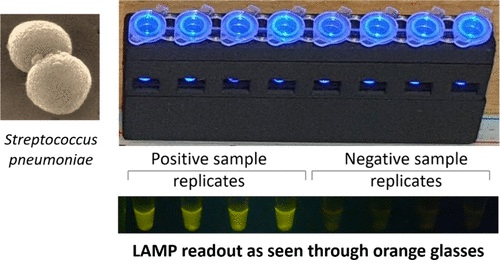
New Diagnostic Method Detects Pneumonia at POC in Low-Resource Settings
Pneumonia continues to be one of the leading causes of death in low- and middle-income countries, where limited access to advanced laboratory infrastructure hampers early and accurate diagnosis.... Read more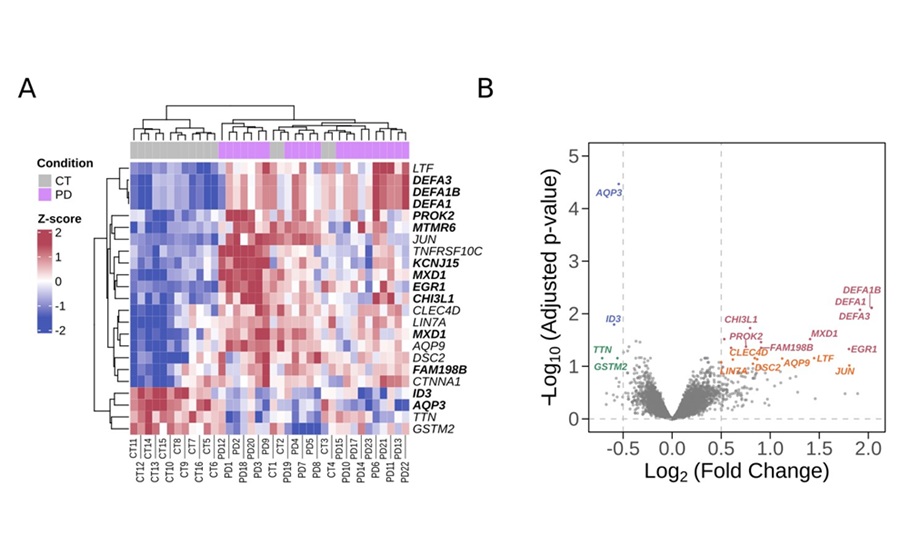
Blood Immune Cell Analysis Detects Parkinson’s Before Symptoms Appear
Early diagnosis of Parkinson’s disease remains one of the greatest challenges in neurology. The condition, which affects nearly 12 million people globally, is typically identified only after significant... Read moreHematology
view channel
ADLM’s New Coagulation Testing Guidance to Improve Care for Patients on Blood Thinners
Direct oral anticoagulants (DOACs) are one of the most common types of blood thinners. Patients take them to prevent a host of complications that could arise from blood clotting, including stroke, deep... Read more
Viscoelastic Testing Could Improve Treatment of Maternal Hemorrhage
Postpartum hemorrhage, severe bleeding after childbirth, remains one of the leading causes of maternal mortality worldwide, yet many of these deaths are preventable. Standard care can be hindered by delays... Read more
Pioneering Model Measures Radiation Exposure in Blood for Precise Cancer Treatments
Scientists have long focused on protecting organs near tumors during radiotherapy, but blood — a vital, circulating tissue — has largely been excluded from dose calculations. Each blood cell passing through... Read moreImmunology
view channel
Blood-Based Liquid Biopsy Model Analyzes Immunotherapy Effectiveness
Immunotherapy has revolutionized cancer care by harnessing the immune system to fight tumors, yet predicting who will benefit remains a major challenge. Many patients undergo costly and taxing treatment... Read more
Signature Genes Predict T-Cell Expansion in Cancer Immunotherapy
Modern cancer immunotherapies rely on the ability of CD8⁺ T cells to rapidly multiply within tumors, generating the immune force needed to eliminate cancer cells. However, the biological triggers behind... Read moreMicrobiology
view channel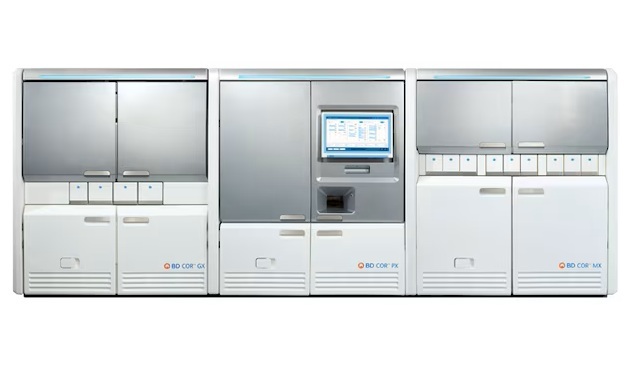
High-Throughput Enteric Panels Detect Multiple GI Bacterial Infections from Single Stool Swab Sample
Gastrointestinal (GI) infections are among the most common causes of illness worldwide, leading to over 1.7 million deaths annually and placing a heavy burden on healthcare systems. Conventional diagnostic... Read more
Fast Noninvasive Bedside Test Uses Sugar Fingerprint to Detect Fungal Infections
Candida bloodstream infections are a growing global health threat, causing an estimated 6 million cases and 3.8 million deaths annually. Hospitals are particularly vulnerable, as weakened patients after... Read morePathology
view channel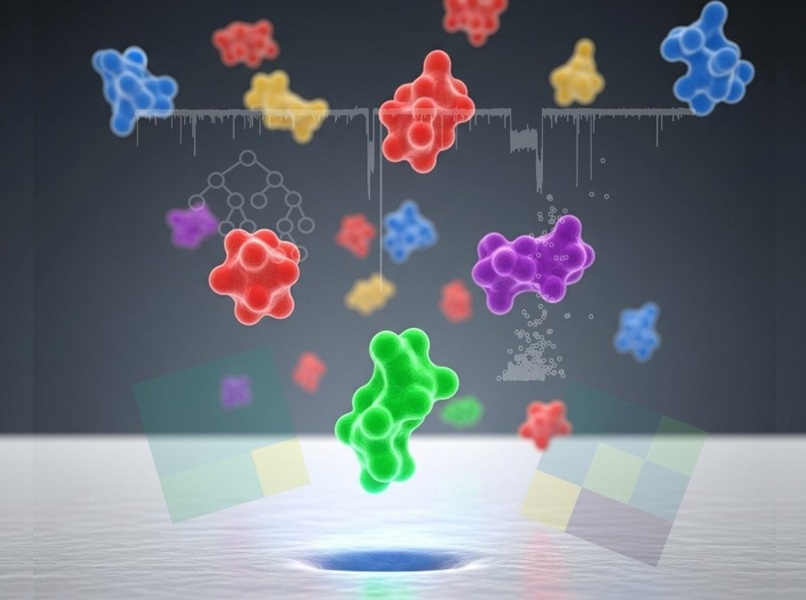
New Molecular Analysis Tool to Improve Disease Diagnosis
Accurately distinguishing between similar biomolecules such as proteins is vital for biomedical research and diagnostics, yet existing analytical tools often fail to detect subtle structural or compositional... Read more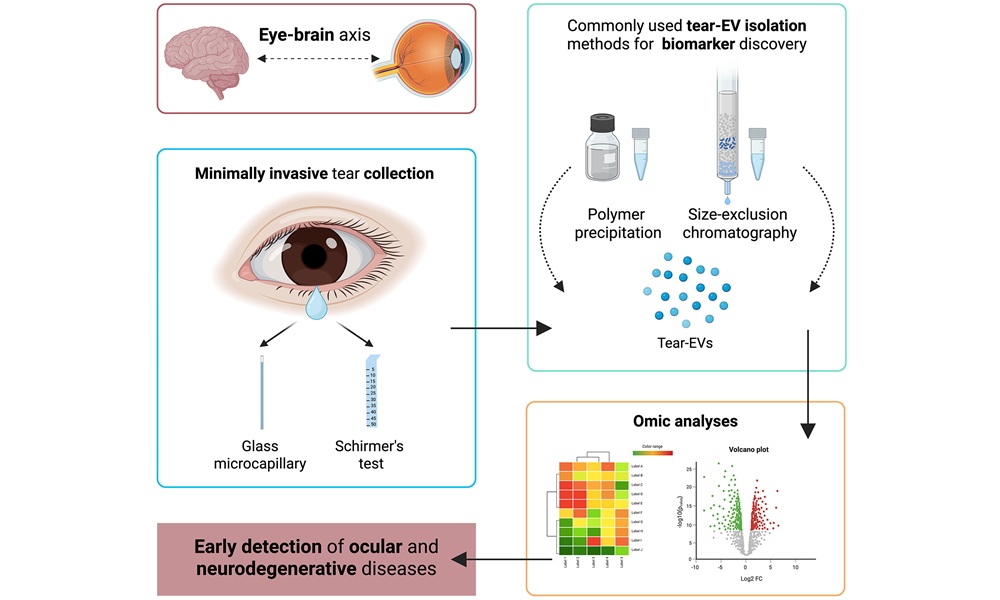
Tears Offer Noninvasive Alternative for Diagnosing Neurodegenerative Diseases
Diagnosing and monitoring eye and neurodegenerative diseases often requires invasive procedures to access ocular fluids. Ocular fluids like aqueous humor and vitreous humor contain valuable molecular information... Read moreTechnology
view channel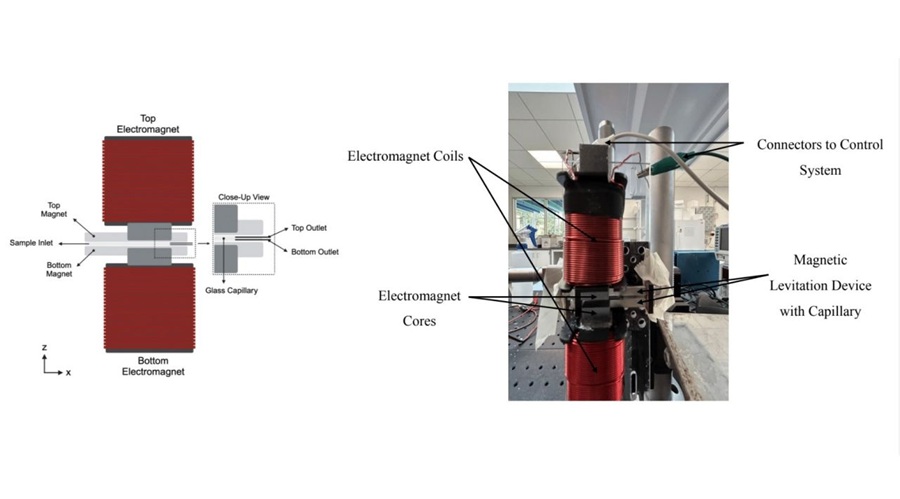
Cell-Sorting Device Uses Electromagnetic Levitation to Precisely Direct Cell Movement
Sorting different cell types—such as cancerous versus healthy or live versus dead cells—is a critical task in biology and medicine. However, conventional methods often require labeling, chemical exposure,... Read more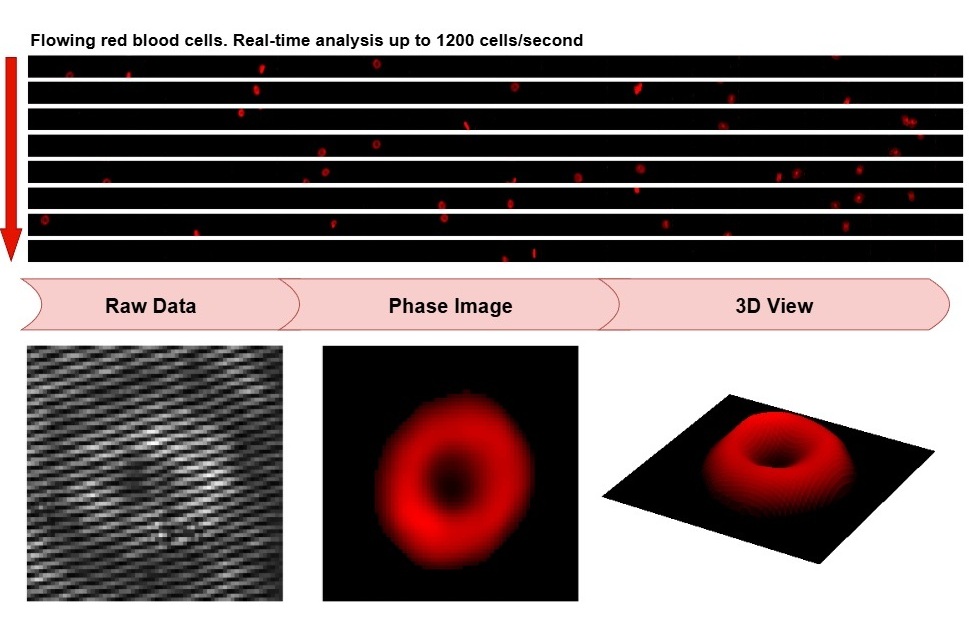
Embedded GPU Platform Enables Rapid Blood Profiling for POC Diagnostics
Blood tests remain a cornerstone of medical diagnostics, but traditional imaging and analysis methods can be slow, costly, and reliant on dyes or contrast agents. Now, scientists have developed a real-time,... Read moreIndustry
view channel
Qiagen Acquires Single-Cell Omics Firm Parse Biosciences
QIAGEN (Venlo, Netherlands) has entered into a definitive agreement to fully acquire Parse Biosciences (Seattle, WA, USA), a provider of scalable, instrument-free solutions for single-cell research.... Read more
Puritan Medical Products Showcasing Innovation at AMP2025 in Boston
Puritan Medical Products (Guilford, ME, USA), the world’s most trusted manufacturer of swabs and specimen collection devices, is set to exhibit at AMP2025 in Boston, Massachusetts, from November 11–15.... Read more
Advanced Instruments Merged Under Nova Biomedical Name
Advanced Instruments (Norwood, MA, USA) and Nova Biomedical (Waltham, MA, USA) are now officially doing business under a single, unified brand. This transformation is expected to deliver greater value... Read more